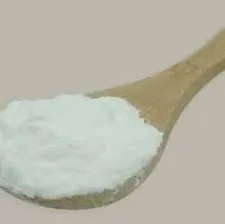The Role of Plastic Additives in Modern Manufacturing
Plastic has become an integral part of our daily lives, serving countless functions across various industries. From packaging materials to automotive components, the versatility of plastics is largely enhanced by the incorporation of additives. These substances are used to augment the physical and chemical properties of plastics, making them more suitable for a wide array of applications. This article explores the significance of plastic additives, their functions, types, and the implications of their use.
Plastic additives are compounds mixed with the base polymer to achieve specific characteristics that improve performance and durability. The incorporation of additives is essential for tailoring the properties of polymers to meet the requirements of specific applications. For instance, some additives enhance the mechanical strength of plastics, while others improve flexibility, UV resistance, thermal stability, or fire retardancy. This capability allows manufacturers to design materials that meet stringent safety and performance standards.
The various categories of plastic additives can be broadly classified into several groups
1. Stabilizers These additives extend the life of plastics by preventing degradation caused by heat and UV radiation. Common stabilizers include antioxidants and UV absorbers, which help maintain the appearance and mechanical properties of plastics during their service life.
2. Plasticizers These additives increase the flexibility and workability of plastics, particularly when it comes to materials like polyvinyl chloride (PVC). Plasticizers reduce the glass transition temperature, making the material softer and more adaptable to various uses, such as in flooring and wiring insulation.
3. Fillers Fillers are inexpensive substances added to plastics to reduce costs and improve properties such as tensile strength and thermal stability. Common fillers include calcium carbonate, talc, and wood flour. While fillers can lower the overall performance of the material if used excessively, they can also enhance certain attributes, such as impact resistance.
plastic additives

4. Flame Retardants To meet safety regulations, manufacturers often incorporate flame retardants into plastics used in electronics, automobiles, and construction materials. These additives help inhibit or prevent the spread of fire, providing an essential safety feature in many applications.
5. Colorants and Pigments Colorants are added to plastics not only for aesthetic purposes but also to enhance visibility and safety. The vibrant hues provided by pigments can make products more appealing and recognizable, playing a crucial role in branding and marketing.
6. Lubricants and Release Agents These additives help in the manufacturing process by reducing friction during the molding of plastic products. They also facilitate the easy release of finished items from molds, enhancing production efficiency.
However, the use of plastic additives is not without its challenges. Certain additives, such as phthalates used as plasticizers, have raised health and environmental concerns. As a response, the industry is actively searching for safer alternatives that do not compromise performance. The push for sustainability has also led to increased interest in bio-based additives and recyclable materials, aiming to reduce the environmental footprint of plastic products.
The future of plastic additives appears to be firmly rooted in innovation. As research continues, new additives will likely emerge that enhance both the performance and sustainability of plastics. Additionally, advancements in nanotechnology may introduce novel additives that significantly improve the mechanical and thermal properties of plastics at minimal weight.
In conclusion, plastic additives are vital components that significantly enhance the performance of plastic materials, enabling their widespread use across multiple industries. Understanding their functions and types not only allows manufacturers to create superior products but also highlights the importance of responsible use and development of these substances as we move towards a more sustainable future. As demands for better performance and eco-friendliness continue to rise, the role of plastic additives will undoubtedly evolve, ensuring that plastics remain a reliable, versatile material for years to come.

